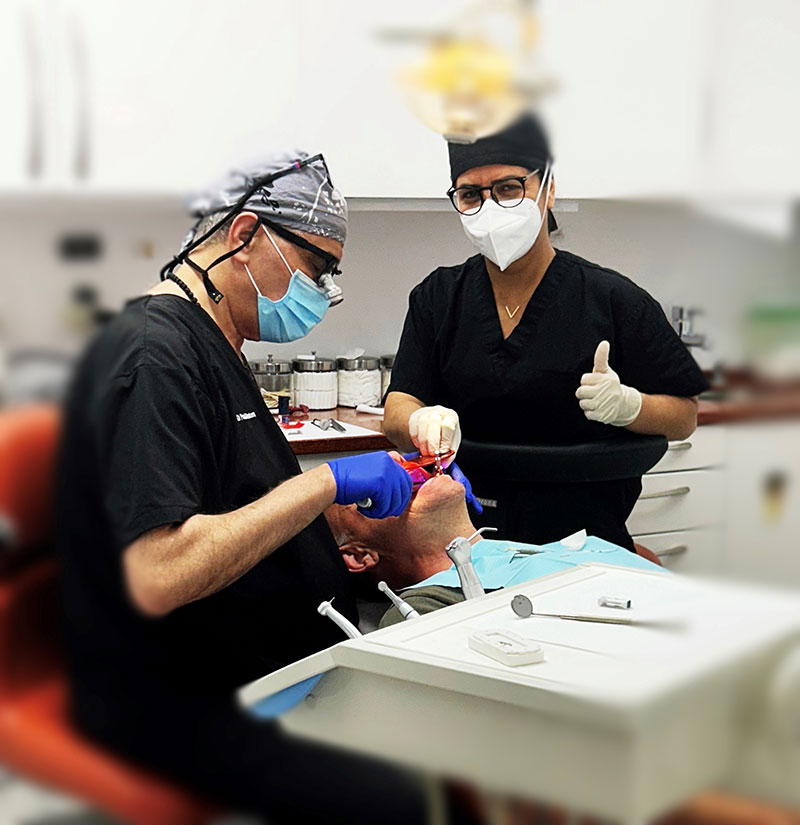Root Canal Treatment (Endodontics)
What is a root canal?
Also known as endodontic treatment, root canal treatment involves removing the infected pulp from the cavity of a damaged or dead tooth.
The dental pulp, containing the nerves and blood vessels, allows the tooth to develop. If bacteria enter your tooth because of deep caries, cracks, or fillings, it can cause infection and abscess formation. This can lead to pain or inflammation (it is possible to detect infection from a dental X-ray or by observing changes in the tooth). Thus, the pulp must be removed. Without treatment, the abscess can lead to serious oral health problems.
The dental pulp, containing the nerves and blood vessels, allows the tooth to develop. If bacteria enter your tooth because of deep caries, cracks, or fillings, it can cause infection and abscess formation. This can lead to pain or inflammation (it is possible to detect infection from a dental X-ray or by observing changes in the tooth). Thus, the pulp must be removed. Without treatment, the abscess can lead to serious oral health problems.
What are the conditions leading to root canal treatment?
- Dental trauma or injury, which may or may not result in a fracture.
- Pain caused by deep decay.
- Periodontal disease.
- Spontaneous or induced pain caused by chewing.
- Pain, when exposed to heat or cold.
What are the different steps of a root canal?
- The dentist (or endodontist) first performs local anesthesia so that the patient feels no pain during the treatment.
- Next, he places a rubber dam around the tooth to isolate it, thereby preventing saliva (and its bacteria) from coming into contact with the tooth.
- A small opening is then made in the tooth to access the canal and to remove the damaged pulp.
- Afterwards, he cleans and widens the canal to fill it with gutta-percha, a material resembling rubber.
- Finally, the treatment ends by either closing the tooth with a temporary filling (in case other interventions are necessary) or a permanent filling.
- A crown for the tooth may also be recommended - especially if it is a posterior tooth - to strengthen the treated tooth and restore it to a natural appearance.
Important points to know
- Root canal treatment may require one or two visits, depending on the damage and complexity of the tooth anatomy.
- In the days following the treatment, your tooth may be sensitive during chewing (for three to seven days). In this case, acetaminophen (ex.: Tylenol) or ibuprofen (ex.: Advil) may provide relief.
- In case of severe pain or swelling, consult your dentist immediately.
- By maintaining good dental hygiene and consulting your dentist regularly, your treated tooth could last as long as the other teeth.
- Most of the time, a tooth can be preserved with root canal treatment, but if all attempts fail, the only option is to extract the tooth.

Contact us at 514-725-4764
Quick appointments, often the same day. Dental emergency available!
Easy access by car or public transport. Metro Fabre station, Papineau exit.
Contact Us